PROTECT YOUR DNA WITH QUANTUM TECHNOLOGY
Orgo-Life the new way to the future Advertising by AdpathwayBare patches are common at the beginning and end of the growing season, but they don’t have to be! Knowing how to prevent and repair them is an essential component of lawn care. The more you know, the better prepared you’ll be when bare spots appear.
It’s best to repair these spots when the weather is cool and mild. Hot summers and frigid winters are too extreme for grass seeds to germinate. They sprout best in fall or spring in most regions.
Some climates, like those of Florida and Southern California, have short autumn and spring seasons with mild winters. Repair lawns in these regions whenever the weather is suitable for grass growth.
So, let’s get into it! Here are some efficient solutions you should try this year, from overseeding to making an alternative lawn. At the end, we’ll cover some tips and tricks for preventing bare patches in grass in the future.
Bunny Tails Grass

Blue Grama Grass

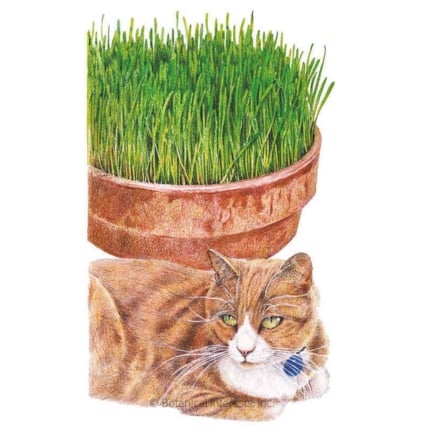
Overseed
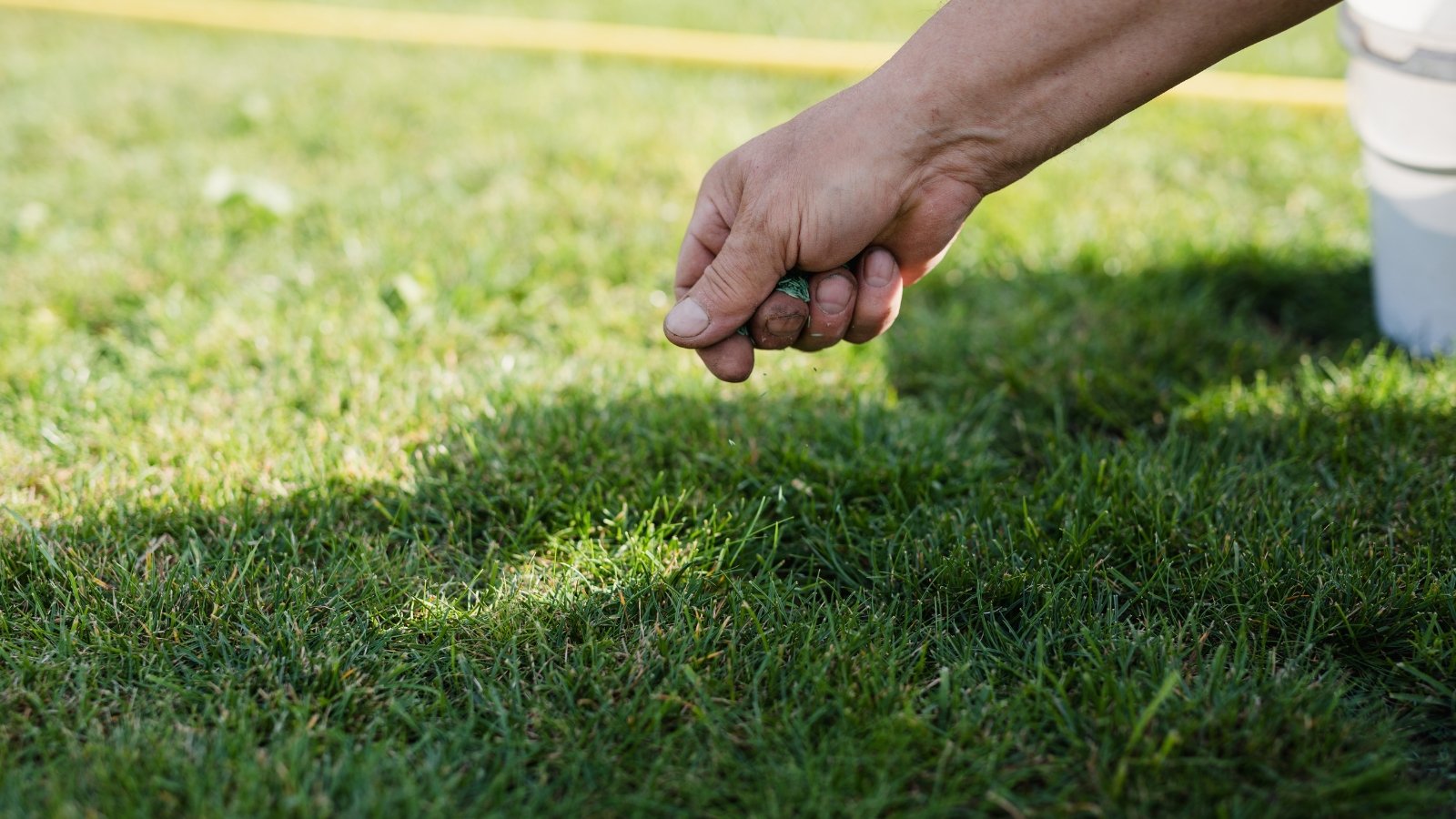 A light soil cover and water help seedlings spring to life.
A light soil cover and water help seedlings spring to life.Overseeding is the cheapest and easiest way to fix bare patches in your grass. Simply gather grass seeds, sow them, and let them sprout! The seeds will sprout into grass seedlings, and you can mow them after three weeks or more of rapid growth.
After sowing the seeds, cover them lightly with a quarter-inch of soil. Water them well, and keep them moist until they sprout. Grass seedlings need more moisture than established clumps.
When shopping, choose a grass seed mix that’ll perform well in your yard. Select grasses that match your garden’s conditions. Choose sun mixes for sunny sites, and shade mixes for shady yards. Opt for mixes with named cultivars, as they tend to perform better than generic blends.
Patch with Sod
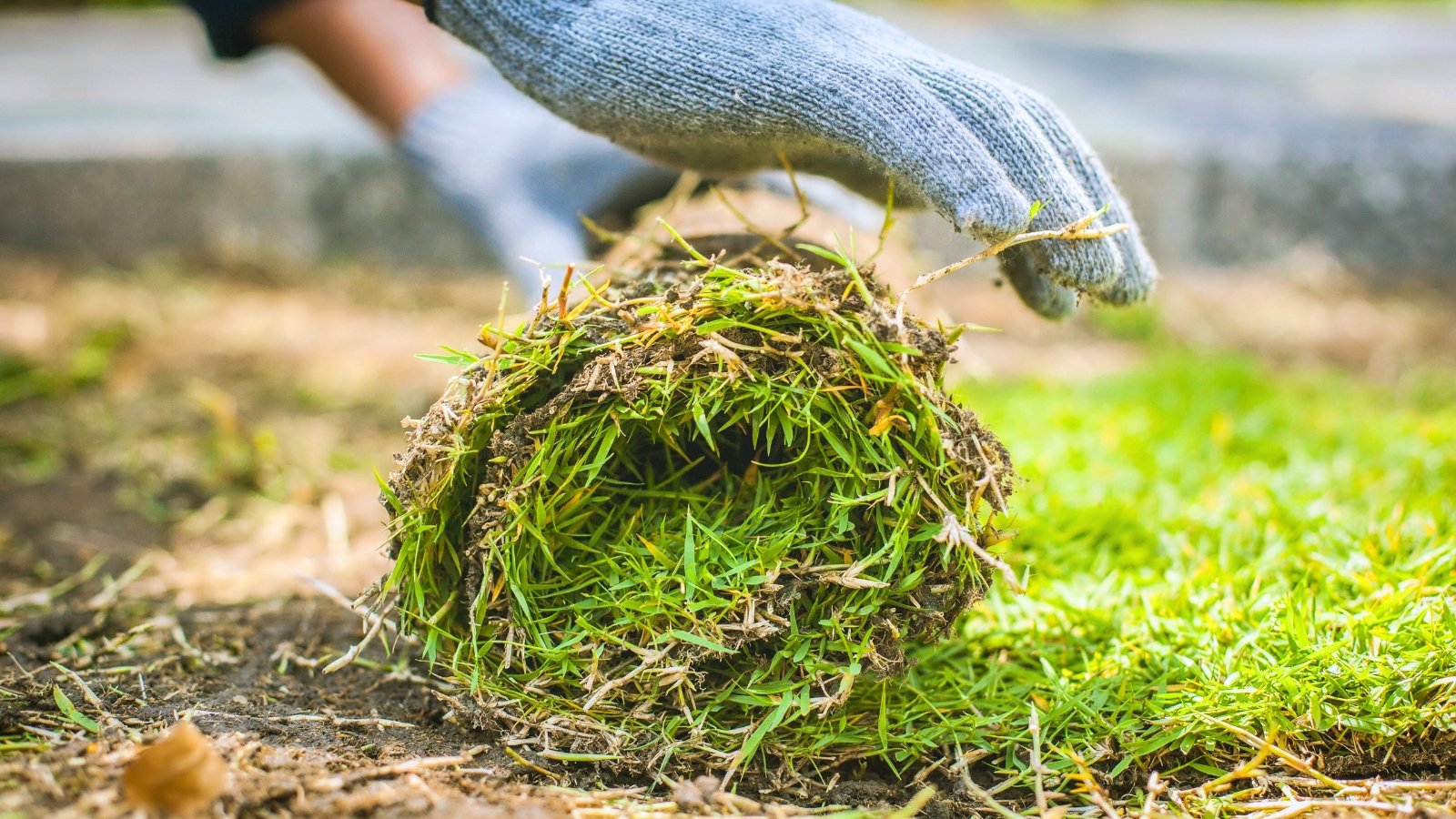 Pre-grown squares blend quickly into patchy lawn spots.
Pre-grown squares blend quickly into patchy lawn spots.Sod is more expensive than grass seed, but it’s quick-growing! It’ll fill in the bare patches in the grass before weeds have a chance to grow. If you have many grass-free patches or a few large ones, sod may be the best tool for repairing the site.
Sod is pre-grown grass that’s cut from the ground and rolled up into circles. It’s also cut into square patches. You can plant these patches in the lawn, and they’ll mesh with the other grasses.
Instead of laying out sod like how you would to make a new lawn, you’ll buy as much as you need and cut it to size. Remove debris from the spots, rake the soil away, and pin the cut sod patches down with landscape stakes. Ensure they’re even with the surrounding grasses.
Keep the sod moist, but not soggy, and wait for it to establish for two weeks or more before mowing. Avoid walking on the sod patches during this period to help them adapt to the site.
Transplant Plugs
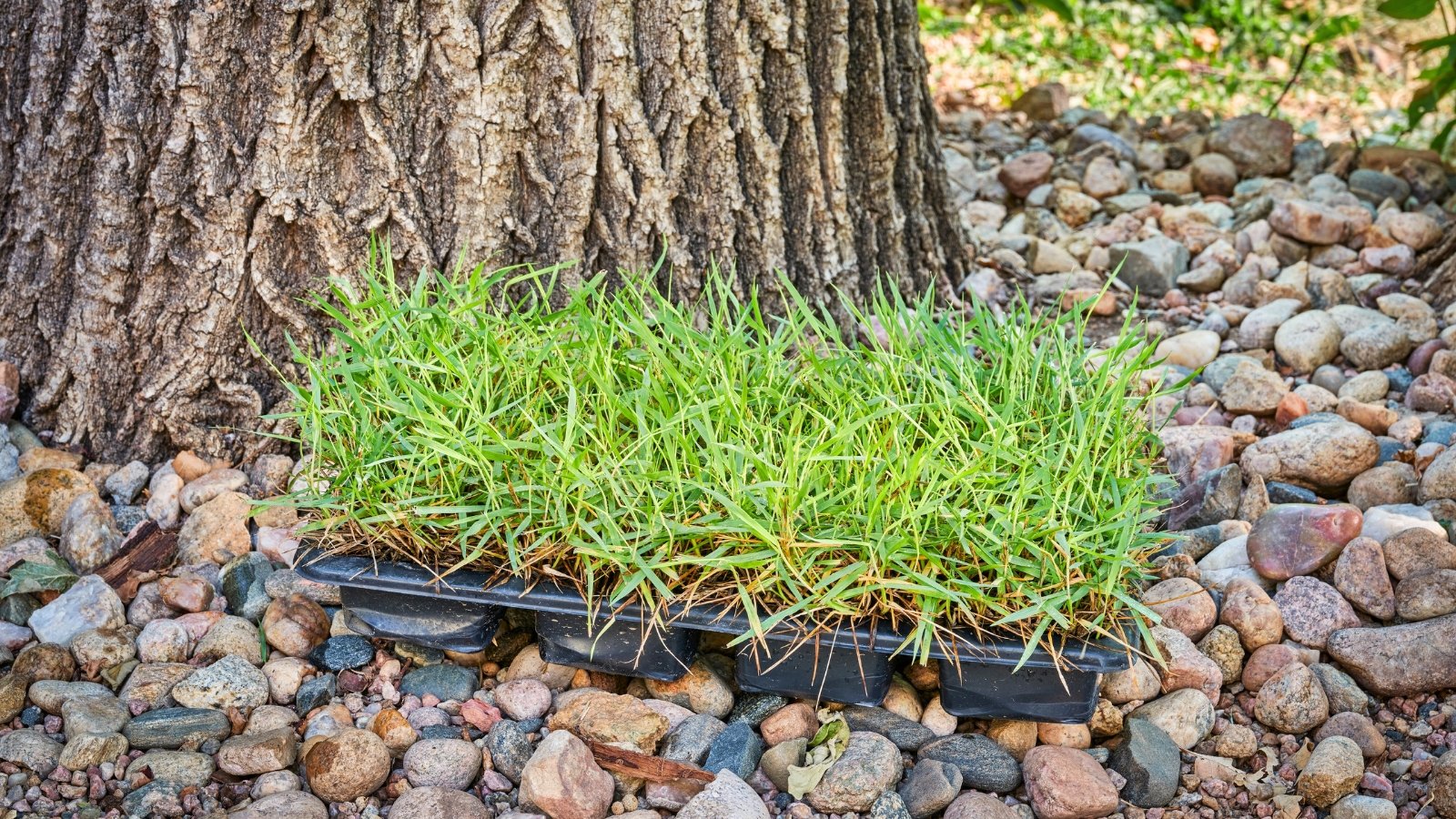 Plugs spread wide with steady watering.
Plugs spread wide with steady watering.Some grass species grow from plugs, or small potted plants. Species like Bermuda, Zoysia, and St. Augustine grasses are the ones you’ll see available as plugs. Because they already have ample roots, they’ll adapt well after transplanting and fill in bare patches of grass with fresh blades.
Transplanting plugs is similar to laying sod. Simply find plugs of your grass of choice, and lay them down on bare, even soil. You may put as many as you need to cover the spots, or leave some space for the plugs to grow into.
Plugs need consistent watering after planting to spread and creep. Ensure they don’t dry out completely, and wait to mow them for two weeks after planting.
Make an Alternative Lawn
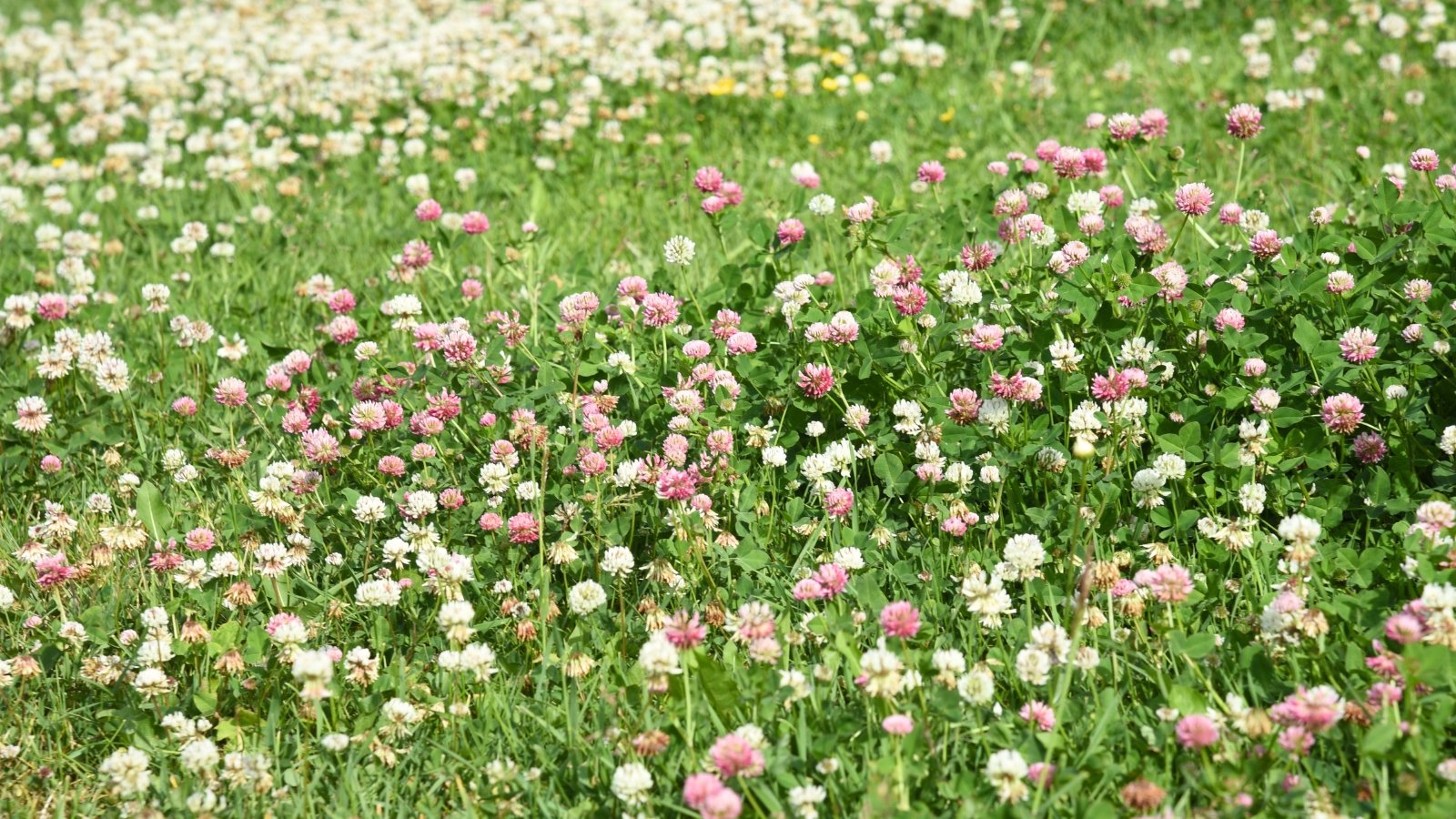 Let low-growers mix in and turn lawns into gardens.
Let low-growers mix in and turn lawns into gardens.Why use boring grass varieties when you can do something different? Many perennials function like grasses to make a walkable lawn, called an alternative lawn. It’s a mixture of different plants that tolerate mowing. The mixture creates a blend of various textures and colors that’s appealing to the eye.
Many plants work well in alternative lawns. These are some walkable, low-growing species that are ideal:
- Blue-Star Creeper
- Clover
- Creeping Thyme
- Moss
- Sedge
If your entire yard is a grass lawn, you can overseed the bare spots with perennials. Let them mix with the grasses to form a meadow-style planting over time.
Create a Garden
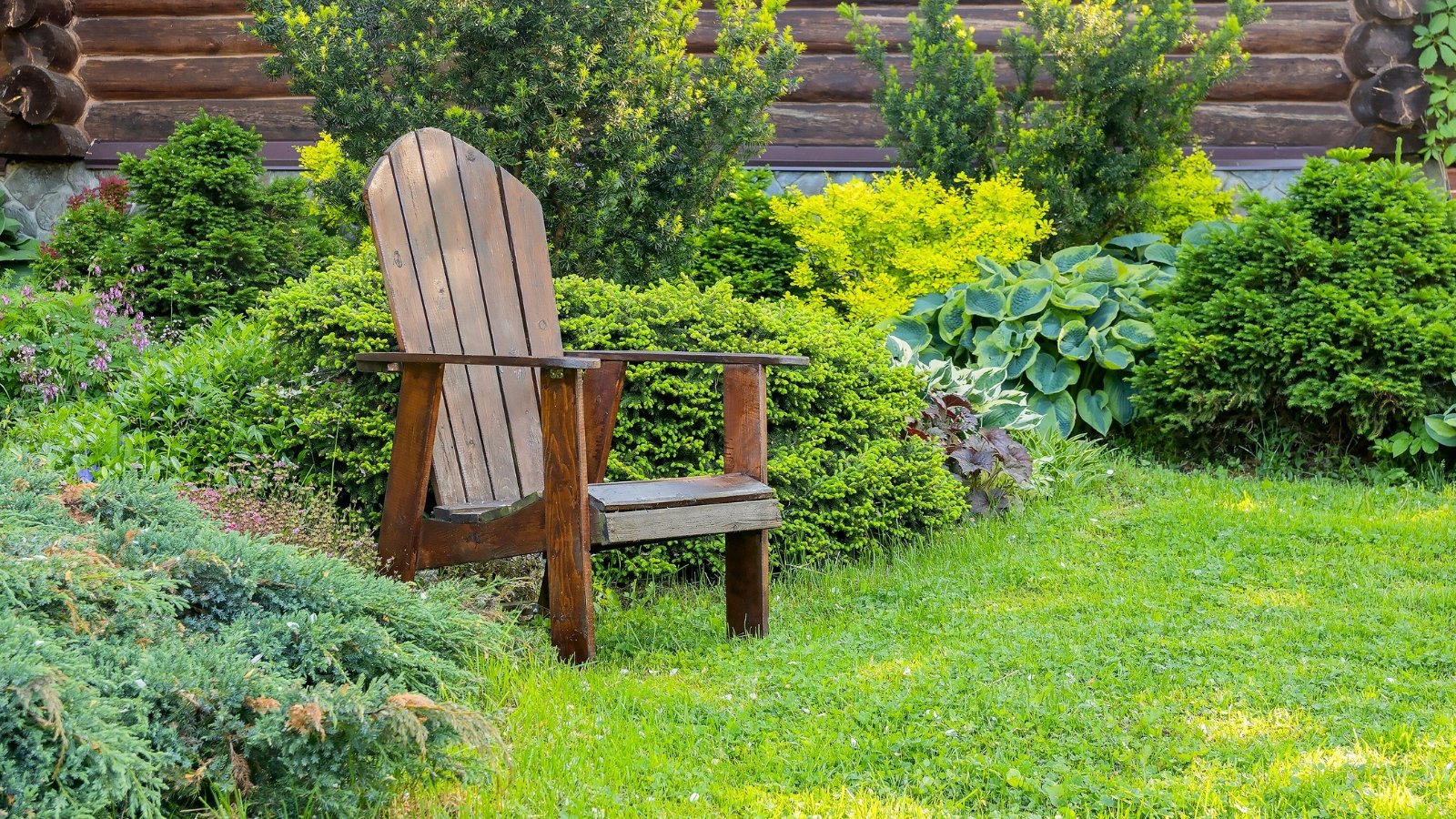 A few plants now can spark a full garden later.
A few plants now can spark a full garden later.Use this opportunity to replace your bare patches of grass with a garden! Instead of overseeding or sowing alternative lawn plants, plant flowering shrubs and perennials instead. Let them flourish, and mow the surrounding lawn.
As the garden plants thrive, you can pull up more parts of the lawn and replace them with flowers, herbs, and crops.
Instead of pulling up the lawn, try snuffing it out with cardboard or tarps. Lay down the coverings, weigh them down, and leave them for a month or more to kill the grass underneath.
In The Future
After patching up the brown spots, you’ll want to keep the lawn happy and healthy to prevent more bare patches of grass from forming. Inconsistent care, extreme weather, and pet traffic can cause dead patches in your grass.
Keep Pets Away
 Too much dog traffic leaves more brown than green.
Too much dog traffic leaves more brown than green.Pets, especially dogs, are master plant killers! They pee on them, and excessive urine leads to dead patches. Rainfall can leach the urine out, and so areas with low rainfall will have excessive buildups and plant death.
To prevent damage from pets walking on the lawn or urinating on it, put up a small fence to keep them out. You can use sticks if you don’t have money for a fence. Simply stab them into the ground at the perimeter, forming a line of sticks like a fence around the site.
Consider growing a living hedge to prevent pet traffic. Use shrubs great for hedging, like laurels, boxwoods, or privets. With routine hedging and pruning, they’ll form an impenetrable barrier and prevent dogs from getting onto your front yard.
 Creating paths helps grass survive heavy foot traffic areas.
Creating paths helps grass survive heavy foot traffic areas.Gardeners, like pets, cause damage! Walking too much in the same location can wear pathways into the lawn. You’ll notice bare grass patches and lines of compact soil that match where you regularly walk.
Consider adding stepping stones or gravel to make pathways where there’s regular foot traffic. Overseeding will help temporarily. However, you’ll notice the bare spots return when you walk in the yard.
In front yards and common spaces, consider using hedges or barriers to prevent others from walking on the grass. Set up small fences, or stick sticks in the ground in a row.
Water Consistently
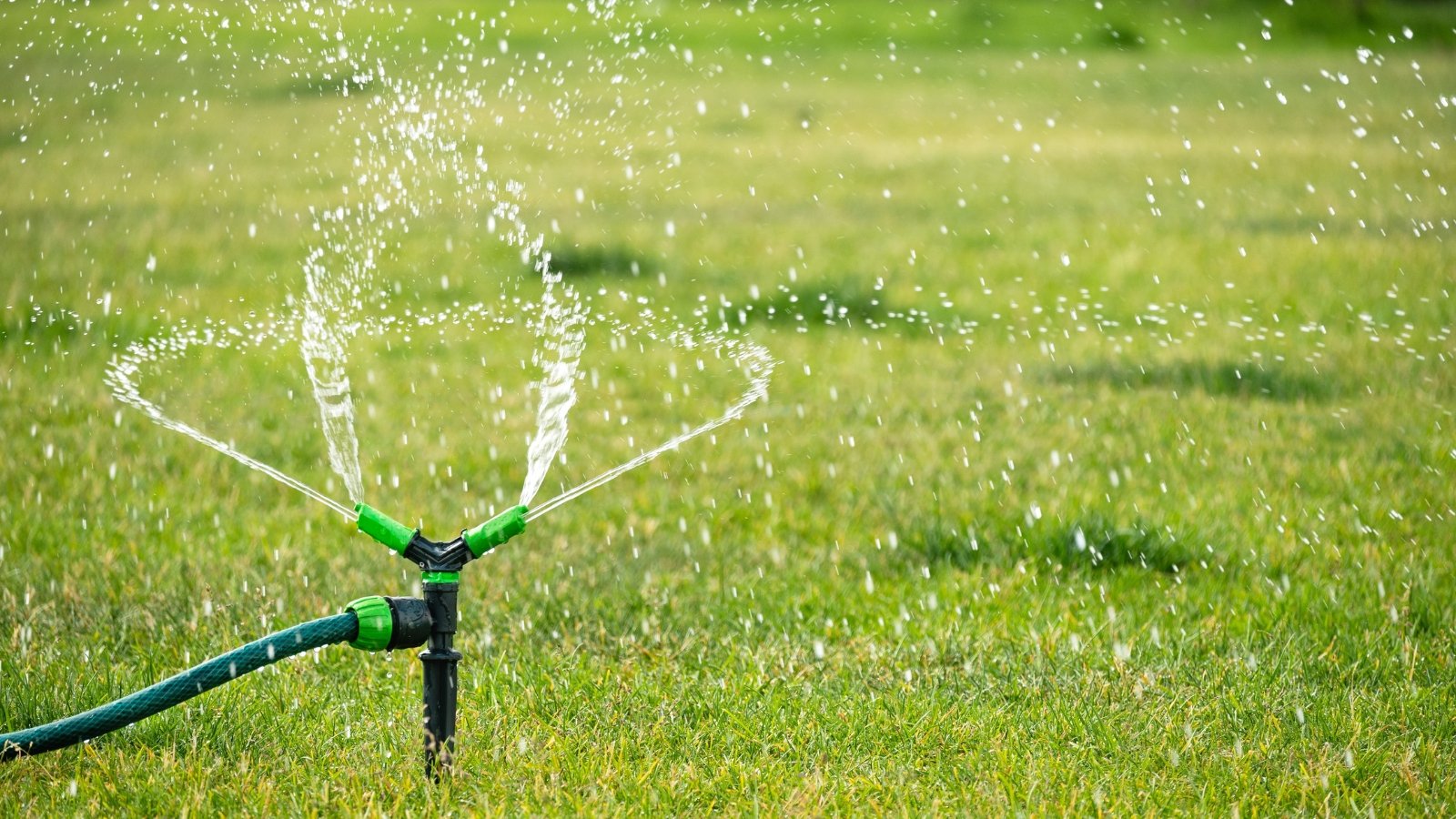 Lawns demand attention and water to look their best.
Lawns demand attention and water to look their best.Consistent moisture is essential for healthy grass growth! Ensure your lawn has regular moisture throughout the growing season to keep the blades perky and green. Use overhead sprinklers, rotating sprinklers, or soaker hoses to maintain soft, moist dirt.
If you don’t like watering, having a lawn is not for you! Lawns are water-thirsty. You may let them die seasonally in some regions, like the Pacific Northwest, to cut down on watering. They’ll return when natural rainfall returns.
Mow Frequently
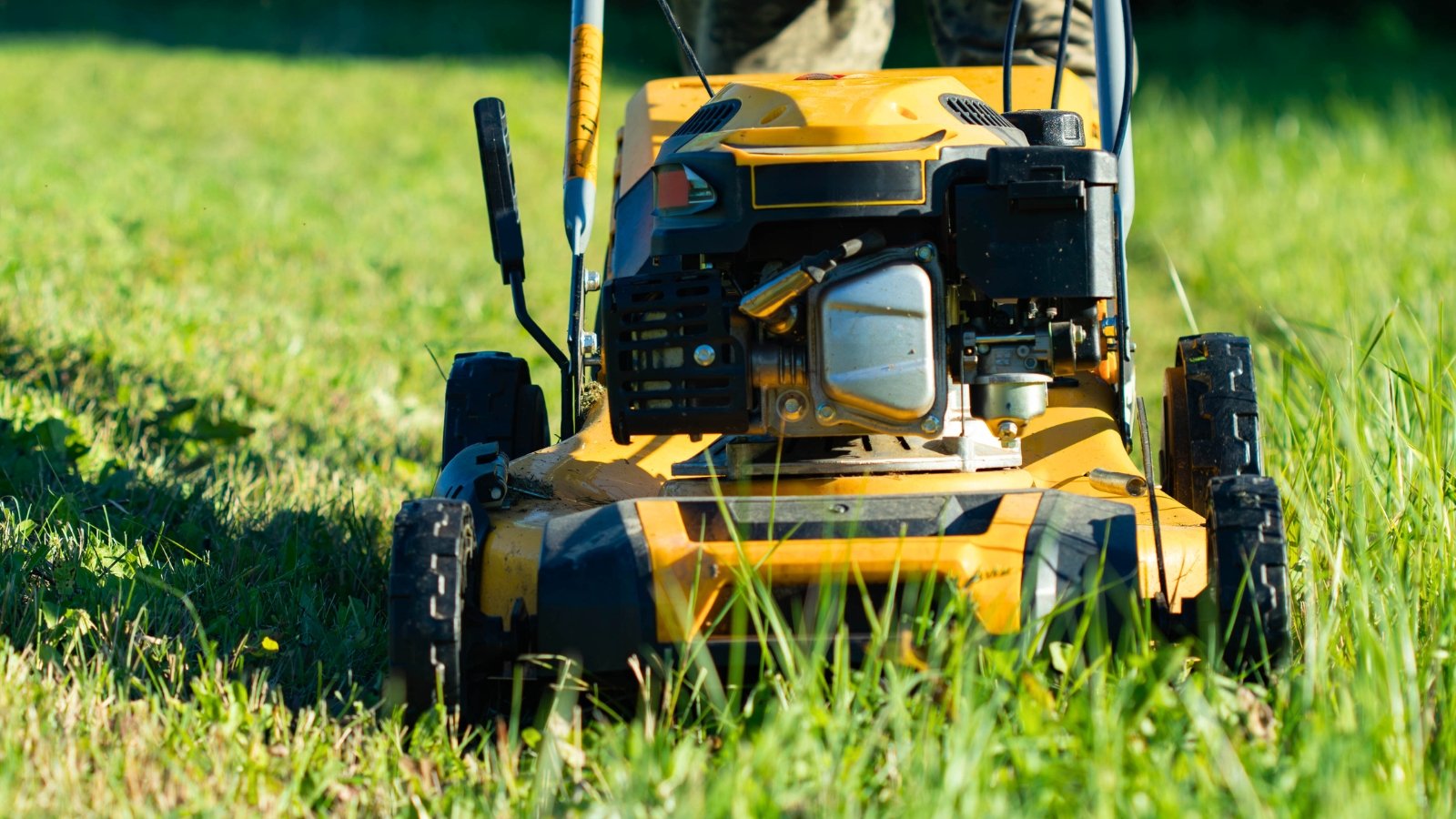 Cutting grass often helps it grow thick and lush.
Cutting grass often helps it grow thick and lush.Frequent mowing is another task that prevents bare patches of grass from forming. Some grasses die back after flowering. If you let them mature, flower, and produce seeds, they’ll die back and create grass-free spots.
Use a lawn mower to cut the lawn often during the growing season. Push mowers are cheap and perfect for small sites. Battery and gas-powered mowers are more expensive, but they work well for large yards.
Frequent mowing promotes dense, lush growth in the area. When you mow the blades, you encourage more to form from the crown. This creates a fresh green lawn with repeated mowing.
Aerate the Soil
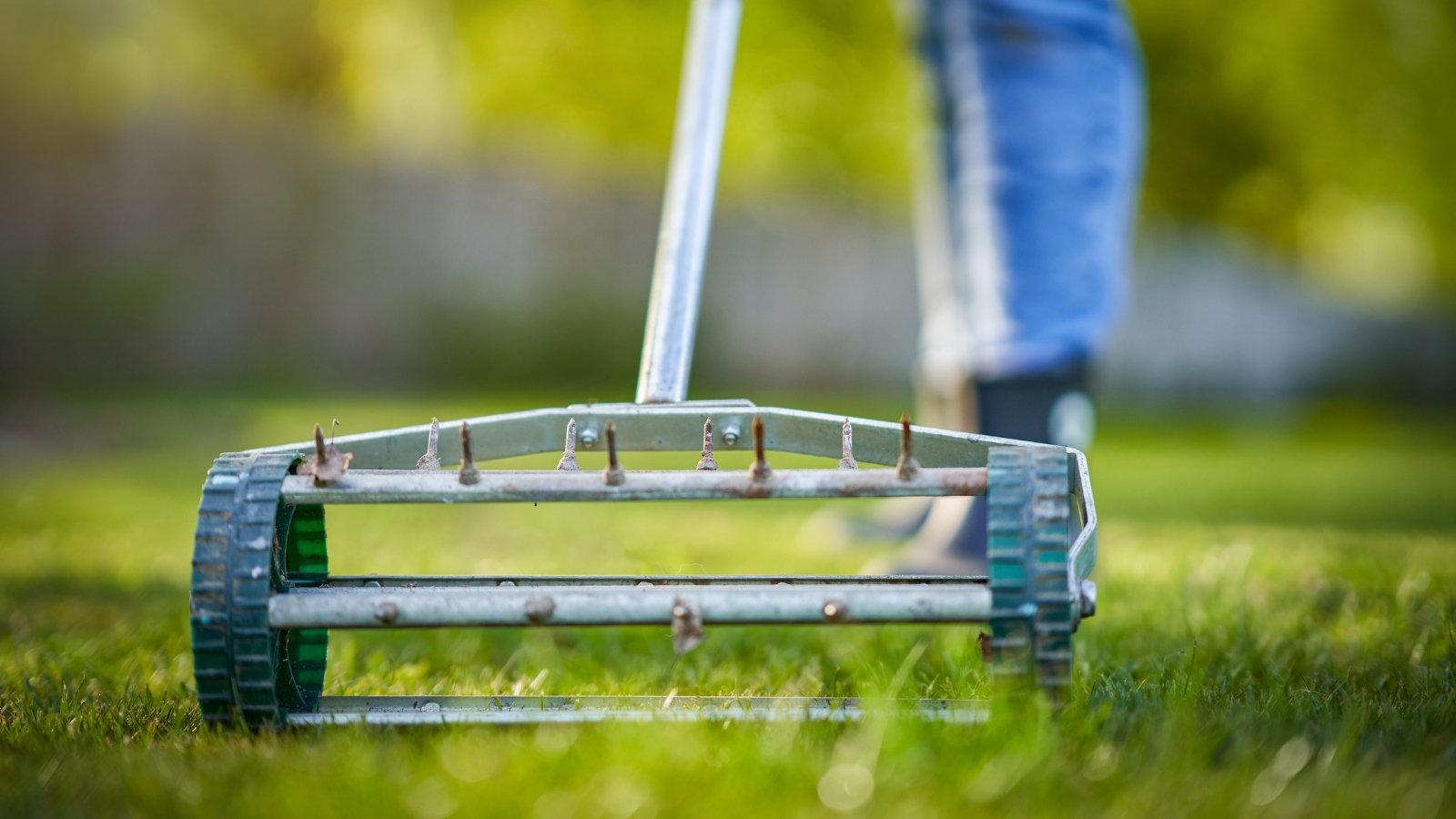 Rolling or stabbing tools break up soil for healthier growth.
Rolling or stabbing tools break up soil for healthier growth.Many growers don’t aerate the lawn’s soil, yet it’s an important part of the care regimen! Aerating leads to more oxygen absorption in the roots. It promotes deep, dense root growth and lush, green top growth.
Aerate the soil once a year during the growing season. Do so when the grass is rapidly growing. Using an aerating tool or a metal rod, make one to two-inch holes in the ground throughout the lawn.
Some aerators roll on the ground, while others stab down. Find one that’s easy for you to use, or ask a neighbor if you can borrow theirs. It’s a handy tool to have if you plan on cultivating lawns for many years.


 2 days ago
6
2 days ago
6
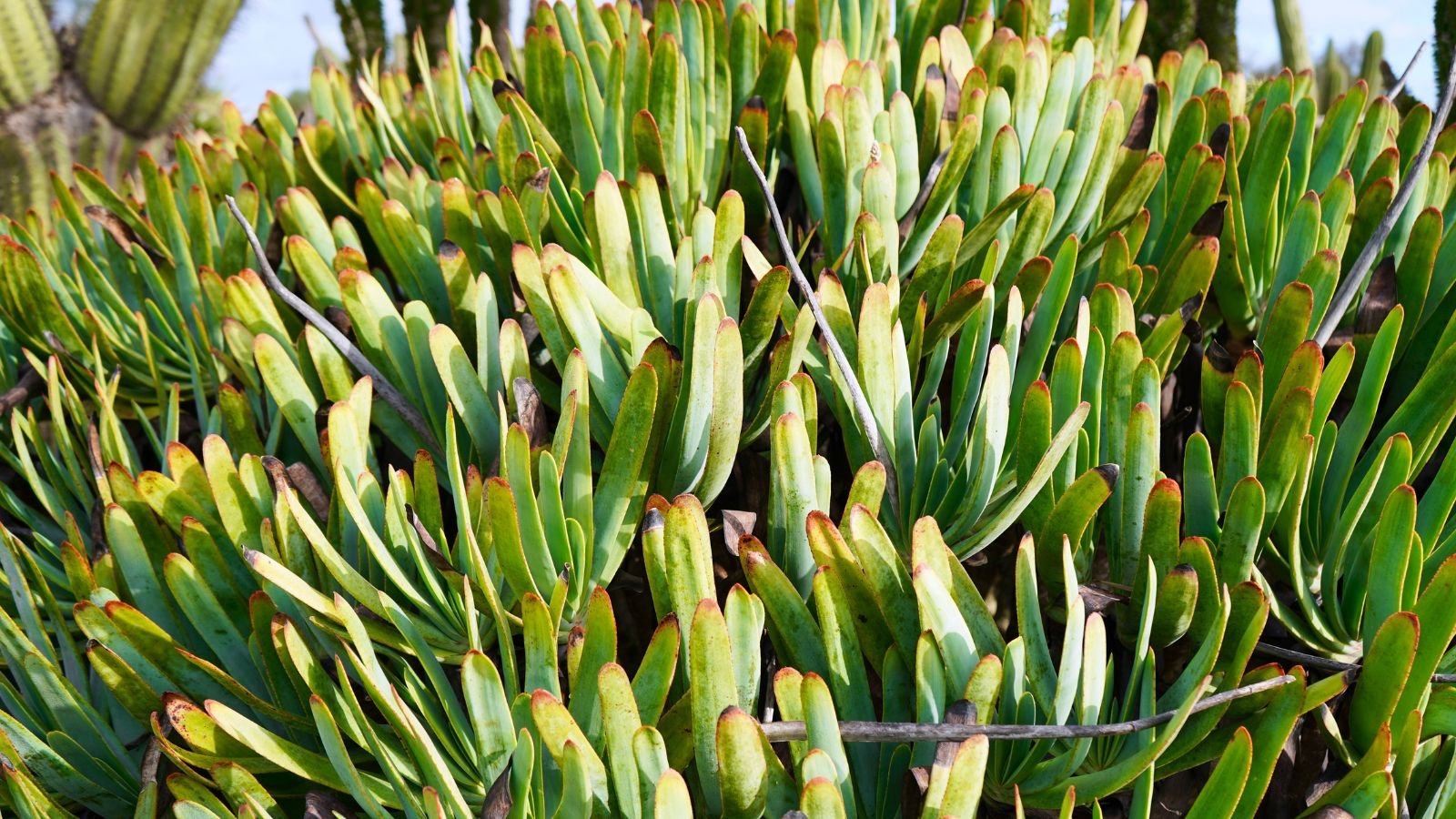




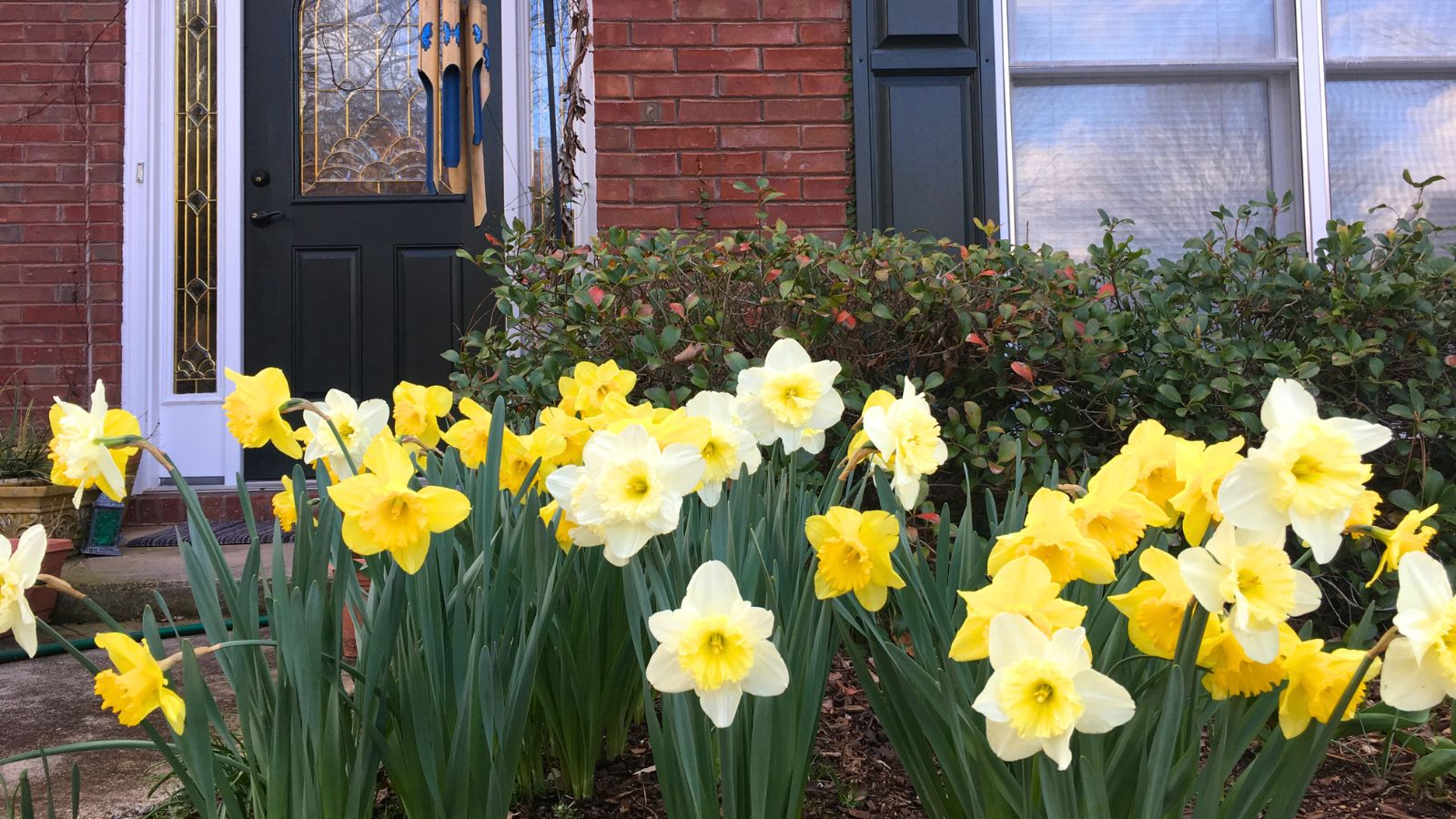















 English (US) ·
English (US) ·  French (CA) ·
French (CA) ·